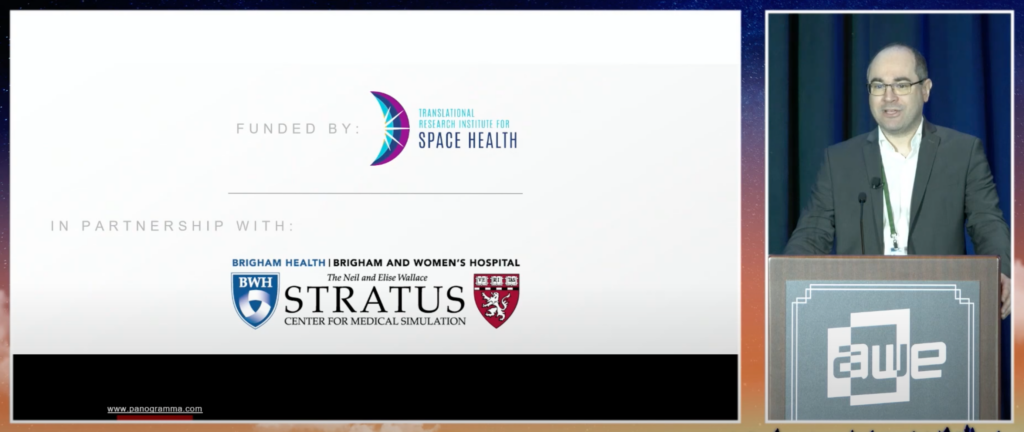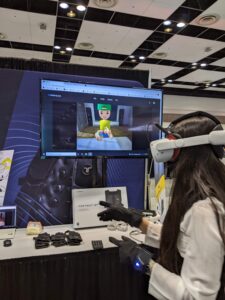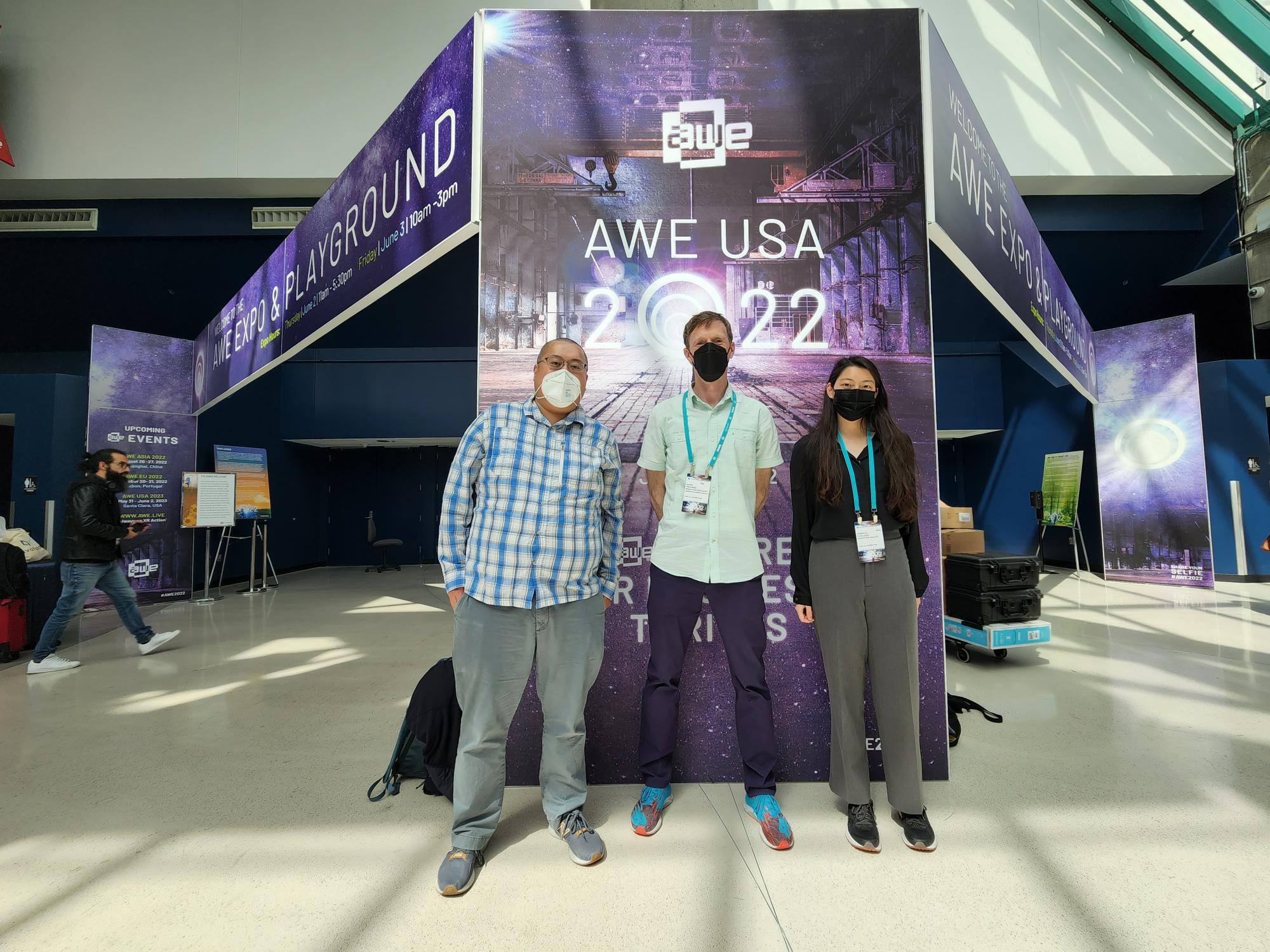At the beginning of June, the Brigham Digital Innovation Hub attended the Augmented World Expo (AWE) for the first time. AWE is an extended reality (XR) organization with over 5000 company members and 60,000 professionals. They organize conferences in the US, Europe, and Asia, featuring presentations, an exhibition hall, and networking events. While AWE is not exclusively focused on extended reality for healthcare, the enterprise, XR enablement, healthcare and wellness, and remote collaboration, training and education tracks provided insight into the current state of XR. A highlight from the healthcare track was the panel led by Dr. Roger Dias discussing the XR medical training scenarios developed at Brigham and Women’s STRATUS Center for Medical Simulation in partnership with NASA. In addition to the talks, the exhibition hall was an arena for the team to witness the technology firsthand and connect with companies leading the industry.

We attended AWE to learn about the current state of XR, particularly for healthcare. After three days of presentations, demonstrations, networking, and delicious Korean barbeque, these are our takeaways from AWE 2022.
- The current model for XR in healthcare centers around point solutions.
The majority of healthcare solutions we saw at the conference were for training, simulation, and education, rather than validated clinical treatment. We would categorize validated clinical treatment as more of an emerging use case. As our team continues to learn about XR, we were excited to hear about the work being done across MGB with various XR companies.
- The infrastructure needed for scaling XR in healthcare is just beginning to form
The emerging area of XR logistics and support services includes solutions for distribution, mobile device management, and cleaning. XR MDM platform Manage XR is partnered with Pico Interactive and emerged from the need for an VR device management system at Stanford Children’s Hospital in 2020. Additionally, ArborXR is the XR MDM for over 600 companies. Beyond MDM, CleanBox’s UV disinfection product simplifies the sanitization of VR wearables. An additional company we encountered, Ultraleap, produces add-ons for headsets to allow users to reliably control their devices using only their hands. Overall, however, XR hardware distribution remains a challenge.
- Wearable AR remains an early, proof-of-concept stage technology with primarily iterative updates from incumbent companies.
Magic Leap’s product, Magic Leap 2 is an AR headset, compute pack, and controller package designed for enterprise use. Compared to the first Magic Leap glasses, the new headset is lighter, has a 100% increase in field of view, and dynamic dimming. Qualcomm publicly released the Snapdragon Spaces developer kit and announced the first group of companies partnering in the Snapdragon Spaces Pathfinder program. There are also emerging AR/VR bridge solutions that use VR hardware with a pass-through camera, such as Varjo, whose Aero headset won an award for best head worn device, Campfire, and Meta.
- Nonwearable AR solutions were found to be more mature and extensive than wearable AR solutions.
The spectrum of nonwearable AR solutions includes very well-described use cases with many vendors. This included solutions for tablets and smartphones, as well as some that allowed multiple devices to “see” the same objects overlaid in one space, such as Immersal and Niantic 8th Wall. There are potential applications for wearable AR in training and patient experience – for example, see this video for the 8th Wall Project. Sony’s Spatial Reality Display is a desktop monitor that has a 3D image follow the movement of the user’s eye. Proto offers an impressive 4k, life-size holographic display that may be useful in training, presentation, patient experience, and more.
- Next generation wearable haptic technology has great potential in healthcare
Haptic technology showed promise for applications in training, simulation, and remote consultation processes. Next generation wearable haptic technology, such as the HaptX wearable tactile gloves are still quite large, expensive, and in an early stage of maturation. Other wearable haptic companies such as Weart and bHaptics offered simpler, cheaper devices with haptic feedback and other unique attributes including thermal cues and buzzers to enhance the VR experience. The rise of wearable technologies to provide tactile feedback show potential for even more immersive use cases in extended reality in the future.

Overall, we found that many of the XR technologies present at the conference show promising utility for healthcare. However, more steps towards addressing privacy concerns, expanding XR infrastructure, and healthcare use cases will be needed before the impact of XR on healthcare will be truly felt.
Keep an eye out for more in-depth discussions about XR and emerging technologies in future iHub blog posts.

